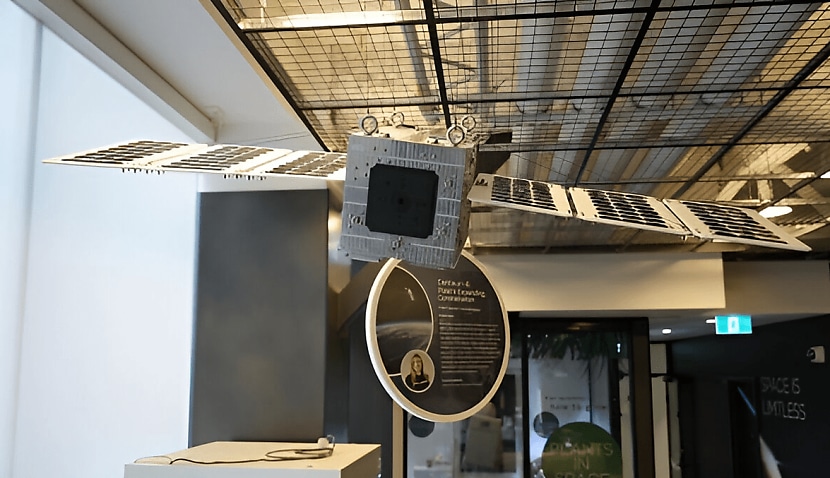
Centauri-6 blasted off in April as part of SpaceX’s Bandwagon-1 mission and uses sensors to scan beneath the Earth’s surface.
Mining companies use the technology to both speed up the hunt for minerals and reduce costs by lowering the need for invasive land surveying.
The success of the ExoSphere mineral-detecting technology has led Fleet to be named one of Australia’s fastest-growing companies, boasting clients such as Rio Tinto, Barrick Gold, and Core Lithium.
Centauri-6, meanwhile, is the eighth satellite launched by the South Australia-based company, with Fleet co-founder Flavia Tata Nardini previously hailing it as a “portal into a future of efficient, mass-scale satellite manufacturing”.
“Humanity’s expanding satellite infrastructure is rapidly unlocking new capabilities that can help to address some of the most pressing challenges facing our planet,” she said.
“At current rates of mineral discoveries and production, our net-zero goals and clean energy future are unattainable in the coming decades.”
The Australian Space Discovery Centre is in the McEwin Building in Lot Fourteen on the east end of North Terrace in Adelaide. It’s open between Wednesdays and Sundays.
It comes after Space Connect reported in March how Fleet had updated the software on one of its older model Centauri satellites to enable “push to talk” (PTT) messages for the ADF.
The upgrade means personnel situated thousands of kilometres apart in remote locations will soon be able to send secure voice messages. Defence Space Command awarded Fleet a AU$6.4 million contract last year as part of the ASCEND2LEO program.
The project was supported by SmartSat CRC – a collaboration between universities and research organisations that partner with industry – and the UniSA-backed Safety from Space.
Fleet called the innovation a “major leap forward in tactical communications capabilities” and said its Centauri satellite is now the “smallest voice-capable satellite on Earth”.
“Custom waveforms are a critical part of enabling high-performing satellite capabilities,” said Dr Mark Rice, founder of Safety From Space.
“We’re excited to continue working with partners to help build secure and resilient satellite-based solutions in support of the ambitious objectives of the Australian private and public sectors.”
The live demonstration was hosted by the Defence Science & Technology Group (DSTG) and abided by a “strict criterion” for one-way voice transmission, including voice quality, reliability, and link persistence across “thousands of kilometres in manifold operational environments”.

Adam Thorn
Adam is a journalist who has worked for more than 40 prestigious media brands in the UK and Australia. Since 2005, his varied career has included stints as a reporter, copy editor, feature writer and editor for publications as diverse as Fleet Street newspaper The Sunday Times, fashion bible Jones, media and marketing website Mumbrella as well as lifestyle magazines such as GQ, Woman’s Weekly, Men’s Health and Loaded. He joined Momentum Media in early 2020 and currently writes for Australian Aviation and World of Aviation.
Receive the latest developments and updates on Australia’s space industry direct to your inbox. Subscribe today to Space Connect here.












